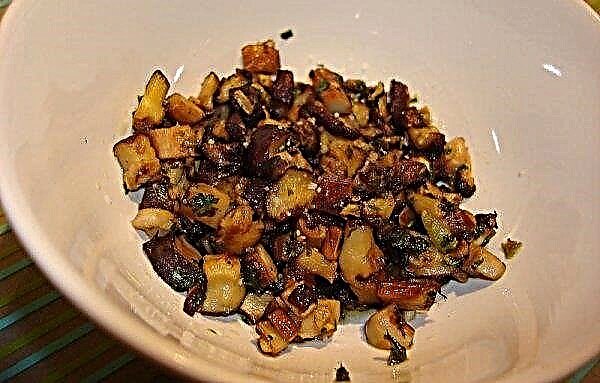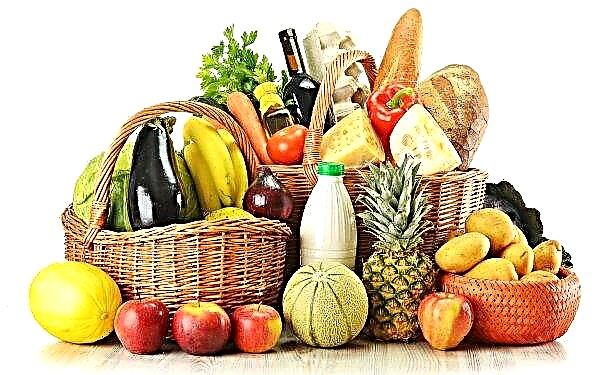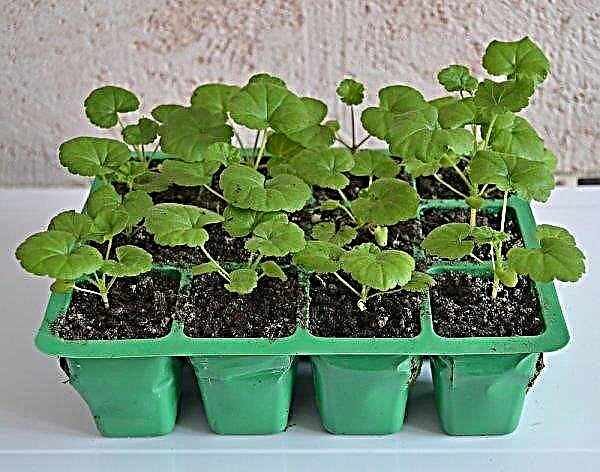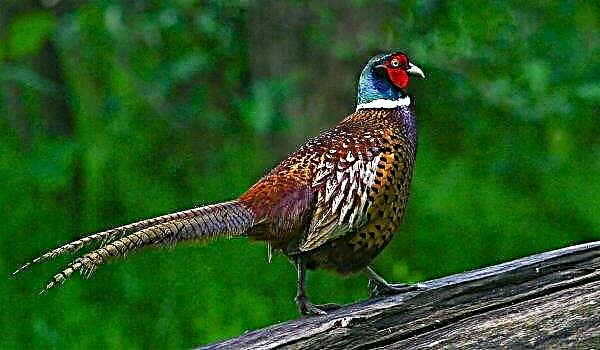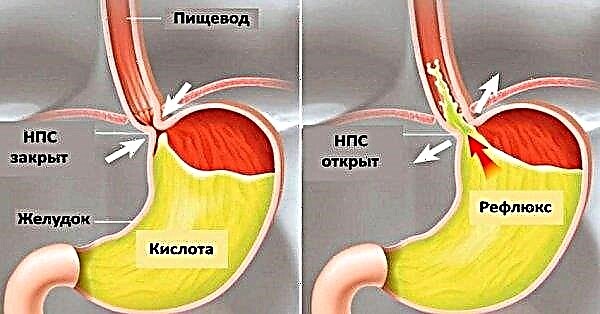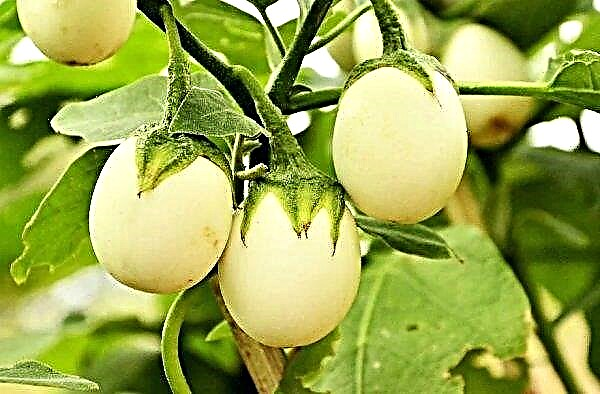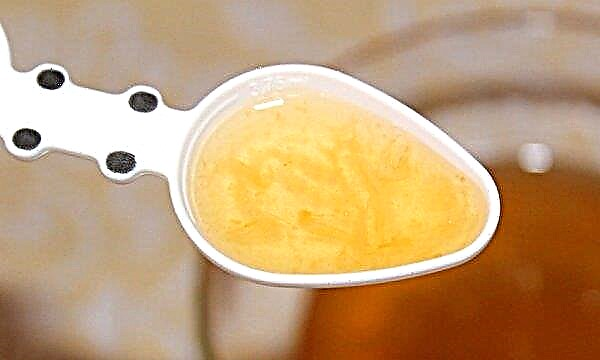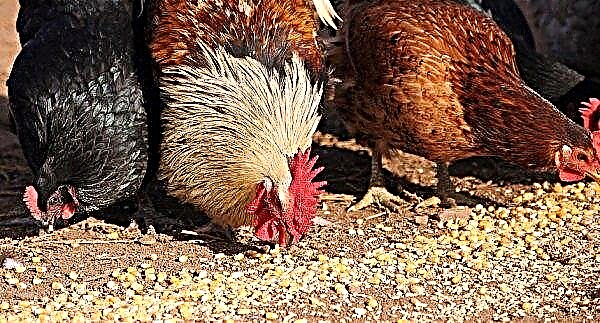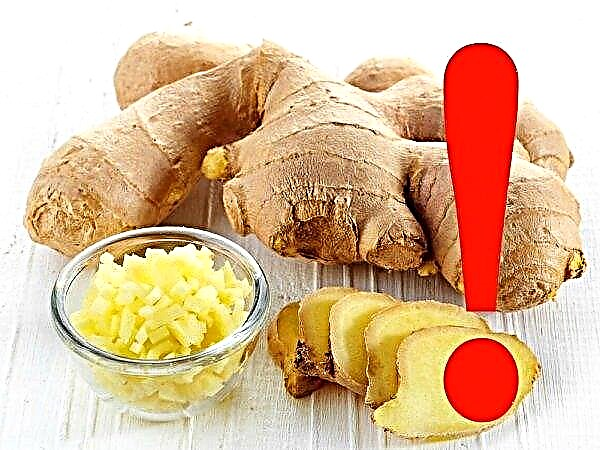Moscow winter wheat 40 is recommended for cultivation in the Central region of Russia. The variety was obtained in 1999. Like any other, it has its own advantages and disadvantages. Detailed information about this variety, its characteristics, yield, disease resistance and growing characteristics, read further in the material.
Origin history
As the name implies, the variety was obtained on the basis of Moskovskaya 39 by repeatedly selecting the best copies in 1999. He showed good results in the fields of the Tula region. The author of the variety is Academician of the Russian Academy of Agricultural Sciences Bagrat Ismenovich Sandukhadze. In 2011, Moscow 40 was registered in the State Register.
 Since the domestication of wheat by humans, selection has been conducted to reduce the percentage of crop loss due to shedding of grains. In wild varieties of wheat, they crumble even before they ripen.
Since the domestication of wheat by humans, selection has been conducted to reduce the percentage of crop loss due to shedding of grains. In wild varieties of wheat, they crumble even before they ripen.
The Moscow 40 selection was aimed at improving the variety of the predecessor, which had a high lodging percentage - up to 60%. The developers claim that the existing pedigree line has significantly improved their performance, and hope that in the coming years it will be able to squeeze out the predecessor varieties from the fields.
Did you know? People domesticated wheat about 10,000 years ago.
Biological description
Botanical description of the plant:
| family | bluegrass |
| plant type | medium early ripening grasses |
| bush | upright |
| root system | shallow with a shallow bedding |
| stem | rounded section, hollow, with 5-6 internodes, white chaff |
| leaves | long, lanceolate |
| inflorescence | ear |
| fetus | grain |
Video: Moscow winter wheat 40
Grade characteristics
Moskovskaya 40 is a variety of winter soft wheat characterized by red grain and an unhandled white spike (erythrospermum).
Varietal plant features:
| bush | upright |
| stalks | short |
| wax coating | medium, but on the upper internodes - strong |
| awns | long |
| pubescence | the average |
| anthocyanin coloration of coleoptile | average |
| spike density | dense, denser than Moscow 39 |
| ear | fusiform |
| shoulder | rounded |
| tooth | bent |
| height | 73–98 cm |
| vegetation | 271-319 days |
| weight | 45–48 g / 1000 pcs. |
| steady | lodging, brown rust, powdery mildew and hard smut |
| susceptible | to septoria, snow mold |
| drought tolerance | standard |
| frost resistance | high |
| applies | in the baking industry |
Productivity depends on climatic conditions, planting dates, soil structure and much more. The average registered yield was 33.7 c / ha. The maximum obtained on chernozems of the Kaluga region is 66.5 c / ha in 2009.
 Ripening of this variety occurs a couple of days later than Moscow 39 and in memory of Fedin.
Ripening of this variety occurs a couple of days later than Moscow 39 and in memory of Fedin.
Grain Quality:
- gluten: 40.3%;
- protein: 17.2%.
Growing rules
The most important factors that lay the foundation for a successful winter wheat crop are:
- early sowing;
- large grain;
- compliance with the seeding rate;
- pretreatment from diseases.
Important! Wheat grows best at temperatures from +21°From to +24°WITH.
Landing time
Early sowing is the most important thing in technology. It allows you to get vigorous plants with improved chances of survival. Such bushes enter the winter with 3-4 leaves and a well-developed shoot base. Premature sowing can cause the plant to stretch before winter, which will increase the risk of winter injuries. Despite the risks, early sowing is preferable to late sowing.
 The optimal sowing window is September 1–15.
The optimal sowing window is September 1–15.
Landing Features
The size of the seeds can vary even within the same variety, so large seeds are selected for sowing. And those grains, which will be obtained from them when harvesting, depend on the quality of the soil, growing conditions, weather and methods of integrated pest control.
Important! Deep sowing delays the emergence of seedlings and often leads to the appearance of a spindle-shaped plant, more prone to death.
A typical sowing density is 30–35 plants per 1 square meter. Seeding rate - 400-500 pcs / sq. m. If the landing dates were missed, then the norm increases by 15%. Also, more seeds are sown on soils with high humidity. Depth - no more than 3-5 cm.
 Seeds must be rolled up to improve their adhesion to the soil. It also helps maintain the necessary moisture for germination.
Seeds must be rolled up to improve their adhesion to the soil. It also helps maintain the necessary moisture for germination.
Based on seed quality, crop rotation and weather conditions, determine if there is a risk of developing winter diseases. And if it exists, then treat the seeds with fungicides / insecticides before sowing to minimize potential damage.
Soil requirements
Sowing of winter can be carried out in a constant stubble. Her task is to keep the snow, which isolates the tissue at the base of the bush from low winter temperatures. Snow cover will provide higher soil temperature and moisture for wheat, which is important for wintering plants.
 The stubble should hold up to 8 cm of snow. In some areas, it is not recommended to use this method of sowing due to the high risk of infection with the mosaic virus, which could remain in the soil after previous crops.
The stubble should hold up to 8 cm of snow. In some areas, it is not recommended to use this method of sowing due to the high risk of infection with the mosaic virus, which could remain in the soil after previous crops.
Basic soil requirements:
| acidity | neutral (pH 6–7.5) |
| moisture contents | up to 15 mm during the sowing period |
| a type | fertile, slightly podzolized, medium loamy or gray forest soil |
 After each rain, a crust forms on the soil. To destroy it, harrowing is carried out.
After each rain, a crust forms on the soil. To destroy it, harrowing is carried out.
Crop rotation
For winter wheat, the predecessor in crop rotation is important. It can be any bean plants - peas, vetch, alfalfa, clover, soy. The precursor plant accumulates nitrogen in the soil from 60 to 180 kg / ha, which reduces the amount of nitrogenous fertilizers applied.
 A diverse crop rotation, in which different crops are involved, allows you to fight weeds at different times throughout the growing season. The overall effect of applying different methods of control at different times allows you to save weeds “out of balance”.
A diverse crop rotation, in which different crops are involved, allows you to fight weeds at different times throughout the growing season. The overall effect of applying different methods of control at different times allows you to save weeds “out of balance”.
Another advantage of crop rotation is the reduction in the pest population. Growing the same culture on the same field (monoculture) enables them to spread very quickly. Proper crop rotation disrupts the reproduction cycle of harmful insects and helps maintain the effectiveness of wheat cultivation.
Care
Proper fertilizer application is necessary to achieve maximum yield and wheat quality. There are a lot of recommendations for their correct introduction. But they all depend on the soil composition of a particular field. The level of nutrients in the soil will change from year to year, and before deciding on the application rate, you need to know it.
Did you know? According to Greek myths, the goddess Demeter gave people wheat and taught her to cultivate.
Plant care consists of controlling pests and protecting crops from diseases and insects. They do this by different methods: biological, chemical, etc. As a result, at least 500 shoots per 1 m² of field should be preserved.
 In the fall, they fight insect larvae that pass into the soil for the winter: wireworm, ground beetle, and scoop. For this, 2–2.5 kg / ha of Bazudina or its analogues are applied to the soil, as well as 5% Volaton in the amount of 50–75 kg / ha. For the prevention of powdery mildew infection, “Bayleton” 0.6 kg / ha is used. And from mice, burrows are treated by irrigation with ammonia water of 200 g each or by scattering of zinc phosphide - 150-400 g / ha.
In the fall, they fight insect larvae that pass into the soil for the winter: wireworm, ground beetle, and scoop. For this, 2–2.5 kg / ha of Bazudina or its analogues are applied to the soil, as well as 5% Volaton in the amount of 50–75 kg / ha. For the prevention of powdery mildew infection, “Bayleton” 0.6 kg / ha is used. And from mice, burrows are treated by irrigation with ammonia water of 200 g each or by scattering of zinc phosphide - 150-400 g / ha.
Harvesting
Wheat is ready for harvest when the stalks and spikelets changed color from green to yellow, and the tops of the stems sank to the ground. Check the crop for maturity. If you squeeze the grain between your fingers, but you did not manage to crush it, then this moment can be considered the starting point in preparation for the harvest. The grain texture should be firm, crunchy and not friable.
Winter harvest is planned for 2 weeks after the kernels are fully ripe. Do it with the help of a combine. Small areas can be collected manually using a scythe or sickle. Moisture content at the time of collection should not be higher than 35%.
Important! Wheat contains gluten. Some people may have an allergic reaction to this substance.
Pest and Disease Control
Currently, most registered wheat varieties are disease resistant. As for insects, measures should be taken when they reach a threshold economically significant for the field.
The main pests:
- Aphidsare generally considered a minor pest of winter crops. But in some years it appears quite a lot, since it can compete for nitrogen with the plant itself, it must be destroyed by treating plants with general insecticides.

- Wheat thrips actively develop in warm weather, damage ears and suck out vegetable juice. The same drugs are suitable for them as for aphids.
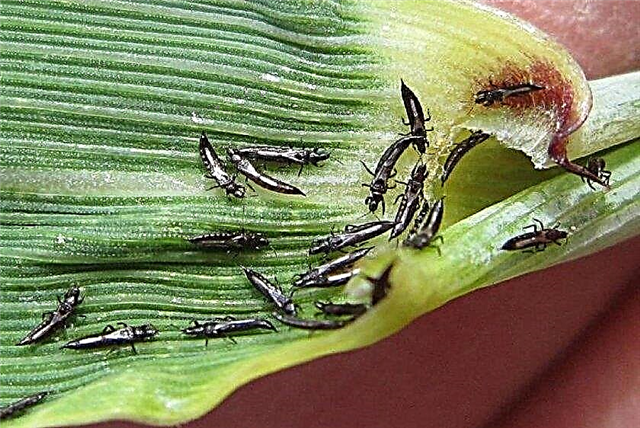
- Ground beetle it must be destroyed in August, otherwise in a couple of weeks it will lay eggs in the soil, and then the treatment can be considered ineffective.

The cultivation of the Moskovskaya 40 variety can be quite promising in the Central and Central strip of Russia. This variety, like others, has its advantages and disadvantages, so the main thing in choosing is to decide how much this or that variety is suitable for your conditions.




